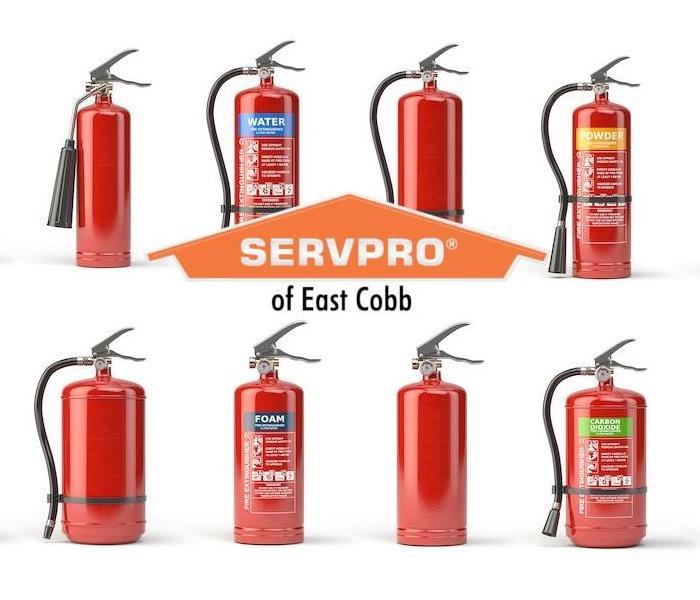5 Kinds of Fires & How to Extinguish Them | SERVPRO of East Cobb
6/29/2022 (Permalink)
 SERVPRO of East Cobb works to repair any damage caused by a fire in your house, regardless of the type.
SERVPRO of East Cobb works to repair any damage caused by a fire in your house, regardless of the type.
5 Kinds of Fires & How to Extinguish Them | SERVPRO of East Cobb
You’re cooking in the kitchen when all of a sudden a grease fire breaks out! What would you turn to first to put out the flames? You may think water will quickly extinguish the fire, but it will only feed the flames.
Knowing the different sorts of fires and how to extinguish them is an excellent place to start in order to prevent damage in 2022. Educate yourself about the various types of fires and how to safely put them out if one breaks out in your East Cobb home:
Class A fires. Class A fires are started by flammable materials like cloth, wood, paper, trash and plastics. For example, if you are cooking on your stove and unintentionally leave a towel too close to the hot stovetop, a Class A fire may ignite.
Class A fires are the most common form of fires, but they happen to be the easiest to extinguish. If a Class A fire starts, you can use a fire extinguisher or water to put out the flames.
Class B fires. Class B fires start with any combustible liquid like oil, paint and gasoline. Propane and butane are common causes of Class B fires. The sole difference between these fires and the other classes of fires is what fuels them during the extinguishing process.
According to the NFPA, a foam or powder fire extinguisher should be used to create a barrier between the fuel and the oxygen. Water should never be used to put out a Class B because it will only make the fire larger.
Class C fires. Class C fires are started by electrical appliances. Electrical fires are the third leading cause of residential fires, and they are typically caused by defective extension cords and overloaded electrical outlets.
To put these fires out, you should first attempt to unplug the connected appliance if you’re safely able to do so. A powder or carbon dioxide extinguisher is the best agent to use to extinguish the flame. Water or a foam fire extinguisher are not recommended for these fires as they create a shock hazard.
Class D Fires. Class D fires are not as common within the home. These usually start in laboratories, warehouses and factories. Combustible metals like magnesium and titanium spark these flames.
A dry powder extinguisher is the best way to extinguish this kind of fire.
Class K Fires. Class K fires typically break out within your kitchen. Grease and vegetable or animal oils start these fires. Because these fires are highly flammable, they spread quickly.
The first step in putting out a Class K fire is to remove the source of heat, such as your stovetop. After this, you should use a wet chemical fire extinguisher, which is designed specifically for a Class K fire. If you don’t have this type of extinguisher, the NFPA recommends putting the lid on the pan and turning off the heat to smother a small grease fire.
SERVPRO of East Cobb works to repair any damage caused by a fire in your house, regardless of the type. We are available to you 24/7. Call (770) 424-0400 or Contact us any time.






 24/7 Emergency Service
24/7 Emergency Service